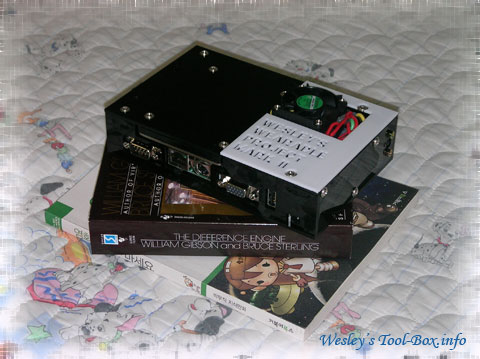Phase 1 Success!
Posted by Wesley on
The new wearable computing project has now seen the first fruit of labour. The main system module, a completely functioning system that only needs power source, input device, and monitor, is now in working order with its own casing. As you can see, it is only as big as a novel, but houses a Pentium M 1.6GHz, 1GB of memory, 100GB hard disk, and a power supply that accepts 8V to 13.6V DC voltage.


